Cloudpital # 1 is one of the top Hospital Software in Saudi Arabia precise account of a patient’s medical history is crucial for the provision of safe, effective, and tailored care. Hospital computer systems—often built around Electronic Health Records (EHR) or Electronic Medical Records (EMR)—are at the forefront of gathering, categorizing, and displaying that patient history. From a basic surgeon’s note by a doctor to years’ worth of lab data, medication orders, and allergy warnings, these systems allow clinicians to view the complete context of a patient’s health at the time of care. This blog discusses how patient history is followed by hospital software, the pieces involved, advantages and disadvantages of keeping these records electronic, and innovations that will define the future of patient-history management.
Click to Start Whatsapp Chatbot with Sales
Mobile: +966547315697
Email: sales@bilytica.com
Cloudpital # 1 Hospital Software in Saudi Arabia

Electronic Health Records: The Digital Backbone
Central to following patient history is the Hospital Software in Saudi Arabia. In contrast to paper charts sitting in filing cabinets, EHRs consolidate information from diverse sources into a single, digital store. Important features are:
Longitudinal Record Keeping. EHRs capture a chronologically ordered set of clinical encounters—ambulatory visits, emergency department admissions, inpatient stays, and follow‑ups—in such a way that previous events remain visible and accessible.
Centralized Access. Authorized users of different specialties and care settings are able to see the same patient history, minimizing duplicate tests and facilitating coordinated treatment plans.
Current Information. With each new piece of data entered—by physicians, nurses, lab systems, or patients themselves through portals—the record is updated in real time, providing clinicians with an accurate snapshot of a patient’s present status.
This electronic foundation not only aggregates data but also triggers a myriad of downstream functions, ranging from clinical decision support to billing and reporting.
Essential Elements of Patient History
Successful history‑tracking relies on the capture of a wide variety of data types. Hospital software generally categorizes patient history into these main groups:
Medical & Surgical History
Chronic Conditions. Diagnoses like hypertension, diabetes, or COPD, including onset date and treatment course.
Surgical Procedures. Summary of previous surgery—procedure code, date, surgeon, and postoperative complication.
Medication Lists
Current Medications. Active medications with dosing frequency, and prescriber clinician.
Past Medications. Discontinued treatments due to a side effect or clinical resolution, including dates and reasons.
Allergies & Adverse Reactions
Drug Allergies. Documented hypersensitivities, types of reactions (e.g., rash, anaphylaxis), and intensity.
Other Allergens. Environmental or dietary allergies that have the potential to impact clinical judgment.
Family & Social History
Genetic Predispositions. Family disease patterns—heart disease, cancer, autoimmune diseases.
Lifestyle Factors. History of smoking, alcohol use, workplace exposures, living environment.
Immunization Records
Vaccine Dates & Types. Childhood vaccinations, flu vaccines, travel vaccines, and booster schedules.
Diagnostic Results
Laboratory Data. Blood counts, metabolic panels, cultures—both recent and long-term trends.
Imaging Reports. Radiology results (X-rays, CTs, MRIs) associated with image files or structured reports.
Progress Notes & Encounter Summaries
Clinician Documentation. Narrative notes, SOAP (Subjective, Objective, Assessment, Plan) formats, discharge summaries that contextualize the data.
By organizing information into these modules—with both discrete, coded fields and free‑text narratives—hospital software constructs a rich tapestry of patient history that supports clinical reasoning.
Data Capture and Organization
Collecting historical data has several mechanisms:
Structured Data Entry: Templates and dropdown menus direct clinicians to input information into preformatted fields (e.g., choosing “Type 2 Diabetes” from a list of diagnoses), facilitating simpler searching and analytics.
Natural Language Processing (NLP): Certain systems use NLP to pull coded concepts out of free-text notes—spotting symptoms, diagnoses, or family-history information hidden in prose.
Bulk Import & Scanning: Legacy paper charts can be digitized through high-resolution scanning supplemented with optical character recognition (OCR). Hospital Software in Saudi Arabia imported data from other systems or HIEs provide fill-in aid.
Patient-Entered Data: Patients can use secure portals or mobile apps to update their social history, notify new symptoms, or upload from home-monitoring devices (such as blood pressure cuffs, glucometers).
Once captured, data is structured with timestamps, user identifiers, and provenance metadata (such as source system or author), maintaining an audit trail and ensuring integrity of data.

Advantages of Solid History Tracking
When Dental Software in Saudi Arabia carefully tracks patient history, healthcare teams gain a treasure trove of benefits:
Enhanced Clinical Decision‑Making. Up‑to‑date medication and allergy lists avoid adverse drug events; historical laboratory results disclose trends that guide therapy modification.
Continuity of Care. When patients move between in‑patient, outpatient, and emergency environments, shared history prevents a vital detail from being missed.
Reduced Redundancy. Easy access to previous imaging and lab tests eliminates redundant repeat testing, saving time and money.
Improved Patient Safety. Patient-specific alerts—such as contraindications or abnormal trend notifications—appear at the point of care, preventing mistakes.
Regulatory Compliance & Reporting. Detailed historical records underpin public‑health reporting, quality-measure tracking, and regulatory audits.
In effect, tracking comprehensive history enhances both care quality and efficiency.
Challenges & Mitigation Strategies
Even with obvious advantages, there are a number of challenges that can hinder successful history management:
Data Quality & Consistency
Challenge: Differences in how clinicians document (e.g., free text vs. codes) can splinter records.
Solution: Implement templated structures for high-priority fields, with recurring data-quality reviews and physician education.
Interoperability Barriers
Challenge: Legacy systems or multi-platform environments don’t “talk” the same language and thus may not transfer history completely.
Solution: Implement standards like HL7 FHIR for information sharing, and join local/regional Health Information Exchanges (HIEs).
Privacy & Security Concerns
Challenge: Consolidating large histories expands the surface area from which data breaches can occur.
Solution: Enforce role-based access controls, end-to-end encryption, and regular penetration testing.
Information Overload
Challenge: A too-tedious record can overload clinicians, hiding the most relevant facts.
Solution: Employ smart summarization tools and “favorites” or “problem lists” that bring to the foreground ongoing problems and vital alerts.
Through actively overcoming these challenges, hospitals can optimize the return on their software investments.
Interoperability & Health Information Exchange
Actual continuity of history frequently spans more than one hospital:
Standards-Based APIs. Contemporary platforms publish FHIR‑conformant endpoints for accessing patient histories—medications, allergies, and encounter summaries—from outside sources.
Health Information Exchanges. Local or national HIEs consolidate data from several providers, so clinicians can view a patient’s entire record even if care was received elsewhere.
Cross‑Institutional Care. For patients referred to specialists or transferred between institutions, history sharing without interruption minimizes duplication and accelerates diagnosis.
These interoperability mechanisms create a unified healthcare environment in which patient history accompanies the patient, not the institution.
Security, Compliance & Auditability
Processing sensitive historical information requires strict safeguards:
HIPAA & Privacy Regulations. Audit logs record all access and modification, promoting accountability and allowing forensic examination in case of incidents.
Encryption & Data Masking. Stored (at rest) and in‑transit data are both encrypted, with further masking of sensitive fields (e.g., psychiatric notes) for non‑authorized views.
Regular Audits & Penetration Testing. Regular security audits ensure that patient histories continue to be safeguarded against emerging cyber‑threats.
By integrating security into each layer—from application to network—hospital software guarantees patient trust and regulatory compliance.
Future Innovations in Patient History Tracking
The future for history‑tracking capabilities is bright:
AI‑Based Summaries will churn through thousands of Mobile EHR points to provide compact “patient snapshots,” highlighting only the most important trends and notifications.
Blockchain for Data Integrity. Decentralized ledgers would ensure patient histories are immutable and verifiable, even between disparate EHRs.
Wearable & IoT Integration. Ongoing streams of biometric data—heart rate, sleep patterns, glucose levels—will be integrated into patient histories, supporting predictive care models.
Voice Recognition & NLP. Clinicians’ spoken dictations will be transcribed and coded automatically, reducing documentation time and improving completeness.
These emerging technologies promise to make patient histories not only more comprehensive but also more actionable and user‑friendly.
Conclusion
Hospital software has fundamentally transformed the way patient histories are captured, stored, and utilized. By aggregating various data types—surgical and medical histories, medications, allergies, labs, and narrative notes—into an interoperable, secure digital repository, EHRs and EMRs allow clinicians to make well‑informed decisions, streamline workflows, and improve patient safety. Although concerns regarding data quality, interoperability, and security persist, steady improvements in AI, standards‑based integration, and user‑centric design are opening the door to increasingly robust history‑tracking solutions. Finally, when a patient’s entire medical history is at their fingertips, healthcare teams can concentrate on what counts most: providing personalized, high‑quality care.
Click to Start Whatsapp Chatbot with Sales
Mobile: +966547315697
Email: sales@bilytica.com
Does Hospital Software in Saudi Arabia Track Patient History? similar software solutions prices were updated on 2025-07-06T01:06:28+00:00 in Saudi Arabia in Mecca, Medina, Riyadh, Khamis Mushait, Yanbu, Jeddah, Dammam, Unaizah, Uqair, Ha’il, Ta if, Al Bahah, Dhahran, King Abdullah Economic City, Najran, Diriyah, Qatif, Khafji, Jubail, Abqaiq, List of Cities and Towns in Saudi Arabia, Ras Tanura, Turubah, Jazan Economic City, Knowledge Economic City, Medina, Khobar, Abha, Tabuk, Saudi Arabia, similar software solutions prices were updated on 2025-07-06T01:06:28+00:00 We also provide in Saudi Arabia services solutions company in Hafar Al-Batin, Udhailiyah, Al-Awamiyah, Hofuf, Hautat Sudair, Buraidah, Tayma, Duba, ‘uyayna, Saihat, Al-Kharj, Al-ula, Jizan, Rumailah, Ar Rass, Arar, Shaybah, Al Majma’ah, Rabigh, Dhurma, Haradh, List of Saudi Cities by Gdp Per Capita, Badr, Sudair Industrial City, Baljurashi, Shaqraa, Al-Khutt, Habala, Ad Dawadimi, Dawadmi, Layla, similar software solutions prices were updated on 2025-07-06T01:06:28+00:00 Price is SAR 100 and this was updated on updated on 2025-07-06T01:06:28+00:00 similar Does Hospital Software in Saudi Arabia Track Patient History? software solutions prices were updated on 2025-07-06T01:06:28+00:00 in Saudi Arabia in Haql, Afif, Al-Abwa, Farasan, Al-Jaroudiya, Thadig, Al-Thuqbah, Al Wajh, Almardmah, Al-Zilfi, Muzahmiyya, Prince Abdul Aziz Bin Mousaed Economic City, Tharmada’a, Skaka, Um Al-Sahek, Sharurah, Tanomah, Bisha, Dahaban, Al Qunfudhah, Qurayyat, Saudi Arabia, Ha’ir, as Sulayyil, Al Lith, Turaif, Al-Gway’iyyah, Samtah, Wadi Ad-Dawasir, Az Zaimah, Safwa City, Jalajil, Harmah, Mastoorah, Hotat Bani Tamim, Jabal Umm Al Ru’us, Rafha, Qaisumah, Al-Ghat, Hajrah, Al-Hareeq. Excerpt: Jeddah (also spelled Jiddah, Jidda, or Jedda; Arabic: Jidda) is a Saudi Arabian city located on the coast of the Red Sea and is the major urban center of western Saudi Arabia similar software solutions prices were updated on 2025-07-06T01:06:28+00:00 Price is SAR 100 and this was updated on updated on 2025-07-06T01:06:28+00:00


